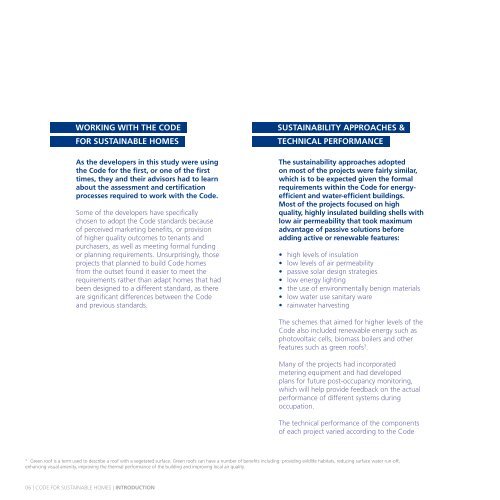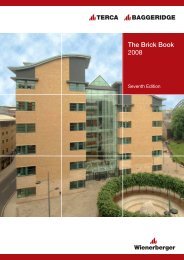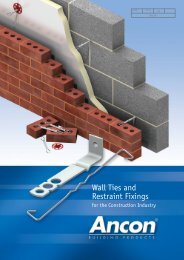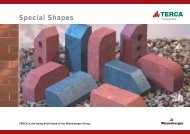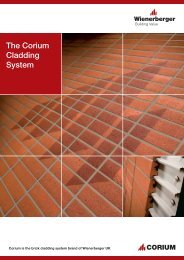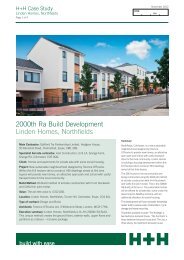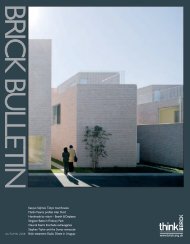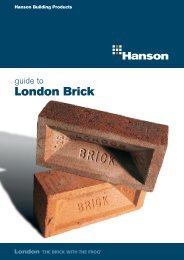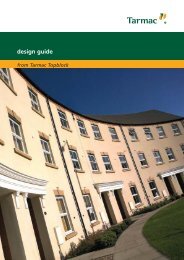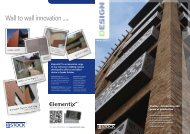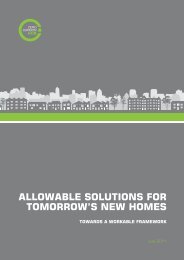Code for sustainable homes: case studies volume 2 - Gov.uk
Code for sustainable homes: case studies volume 2 - Gov.uk
Code for sustainable homes: case studies volume 2 - Gov.uk
You also want an ePaper? Increase the reach of your titles
YUMPU automatically turns print PDFs into web optimized ePapers that Google loves.
WORKING WITH THE CODE<br />
FOR SUSTAINABLE HOMES<br />
As the developers in this study were using<br />
the <strong>Code</strong> <strong>for</strong> the first, or one of the first<br />
times, they and their advisors had to learn<br />
about the assessment and certification<br />
processes required to work with the <strong>Code</strong>.<br />
Some of the developers have specifically<br />
chosen to adopt the <strong>Code</strong> standards because<br />
of perceived marketing benefits, or provision<br />
of higher quality outcomes to tenants and<br />
purchasers, as well as meeting <strong>for</strong>mal funding<br />
or planning requirements. Unsurprisingly, those<br />
projects that planned to build <strong>Code</strong> <strong>homes</strong><br />
from the outset found it easier to meet the<br />
requirements rather than adapt <strong>homes</strong> that had<br />
been designed to a different standard, as there<br />
are significant differences between the <strong>Code</strong><br />
and previous standards.<br />
SUSTAINABILITY APPROACHES &<br />
TECHNICAL PERFORMANCE<br />
The sustainability approaches adopted<br />
on most of the projects were fairly similar,<br />
which is to be expected given the <strong>for</strong>mal<br />
requirements within the <strong>Code</strong> <strong>for</strong> energyefficient<br />
and water-efficient buildings.<br />
Most of the projects focused on high<br />
quality, highly insulated building shells with<br />
low air permeability that took maximum<br />
advantage of passive solutions be<strong>for</strong>e<br />
adding active or renewable features:<br />
• high levels of insulation<br />
• low levels of air permeability<br />
• passive solar design strategies<br />
• low energy lighting<br />
• the use of environmentally benign materials<br />
• low water use sanitary ware<br />
• rainwater harvesting<br />
The schemes that aimed <strong>for</strong> higher levels of the<br />
<strong>Code</strong> also included renewable energy such as<br />
photovoltaic cells, biomass boilers and other<br />
features such as green roofs 3 .<br />
Many of the projects had incorporated<br />
metering equipment and had developed<br />
plans <strong>for</strong> future post-occupancy monitoring,<br />
which will help provide feedback on the actual<br />
per<strong>for</strong>mance of different systems during<br />
occupation.<br />
The technical per<strong>for</strong>mance of the components<br />
of each project varied according to the <strong>Code</strong><br />
3<br />
Green roof is a term used to describe a roof with a vegetated surface. Green roofs can have a number of benefits including: providing wildlife habitats, reducing surface water run-off,<br />
enhancing visual amenity, improving the thermal per<strong>for</strong>mance of the building and improving local air quality.<br />
06 | CODE FOR SUSTAINABLE HOMES | INTRODUCTION


